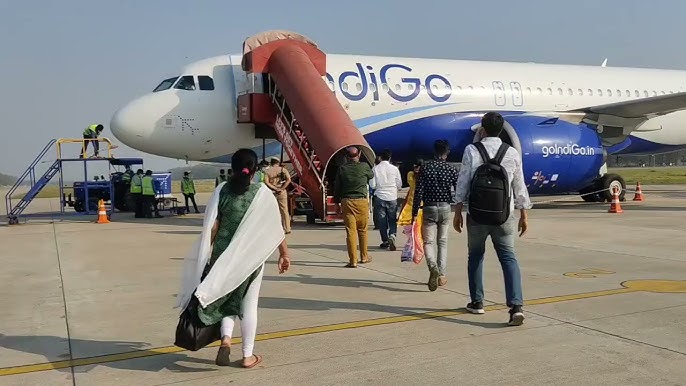
IndiGo Flight from Goa to Lucknow Encounters Mid-Air Turbulence, Lands Safely

 :
| Updated On: 17-Jun-2025 @ 2:43 pm
:
| Updated On: 17-Jun-2025 @ 2:43 pmSHARE
On June 16, an IndiGo flight (6E 6811) traveling from North Goa to Lucknow encountered mid-air turbulence caused by active monsoon weather conditions over western India. The airline issued a statement on Tuesday confirming the incident but emphasized that the aircraft landed safely in Lucknow and that there were no injuries reported.
IndiGo clarified that the turbulence was momentary and attributed it to the seasonal adverse weather patterns typically experienced during India’s monsoon period. The airline praised the actions of its trained pilots and cabin crew, who followed established safety protocols to handle the situation. IndiGo reiterated that the safety of its passengers and crew remains a top priority at all times.
The airline did not disclose further details regarding the specific altitude or phase of flight during which the turbulence occurred, nor whether any emergency was declared during the event. However, it affirmed that all standard operating procedures were strictly followed, ensuring a safe and uneventful landing at Lucknow Airport.
This incident highlights the challenges airlines face during the monsoon season in India, where heavy rains, thunderstorms, and turbulence are common. Airlines often face flight delays, diversions, and safety concerns due to these unpredictable weather patterns.
In a related incident last month, another IndiGo flight—this time from Delhi to Srinagar—also experienced weather-related difficulties. That flight, carrying 227 passengers including a delegation of Members of Parliament from the Trinamool Congress (TMC), encountered a sudden hailstorm while approaching Srinagar. The impact of the hailstorm caused visible damage to the nose of the aircraft. As a result, the pilot declared an emergency and alerted air traffic control in Srinagar.
Despite the emergency declaration, the flight landed safely, and all passengers disembarked without injury. The airline later confirmed that the aircraft had sustained minor structural damage due to hail impact, specifically to its radome (the rounded nose section that houses radar equipment). An investigation and necessary repairs were initiated before the aircraft could be returned to service.
These two incidents underline the importance of robust training and preparedness among flight crews, especially during seasons of intense weather activity. IndiGo, like other major carriers, conducts periodic safety drills and simulation exercises to ensure its personnel are equipped to handle in-flight emergencies, including severe turbulence and weather anomalies.
The Directorate General of Civil Aviation (DGCA), India’s aviation regulator, also mandates that airlines perform pre-monsoon safety audits and issue advisories on safe operations during adverse weather conditions. These include guidelines on fuel planning, diversion protocols, and crew communication during emergencies.
In conclusion, while the recent Goa–Lucknow flight experienced temporary turbulence due to monsoon weather, it landed safely thanks to the timely and professional actions of IndiGo’s crew. Similarly, the Srinagar-bound flight last month was managed effectively despite a sudden hailstorm. These cases highlight both the risks associated with flying during monsoons and the effectiveness of modern aviation safety protocols in mitigating such threats.
Contact Us
House. No. : 163, Second Floor Haridev Rd, near Puberun Path, Hatigaon,Guwahati, Assam 781038.
E-mail : assaminkcontact@gmail.com
Contact : +91 8811887662
Enquiry
×
Reporter Login
×